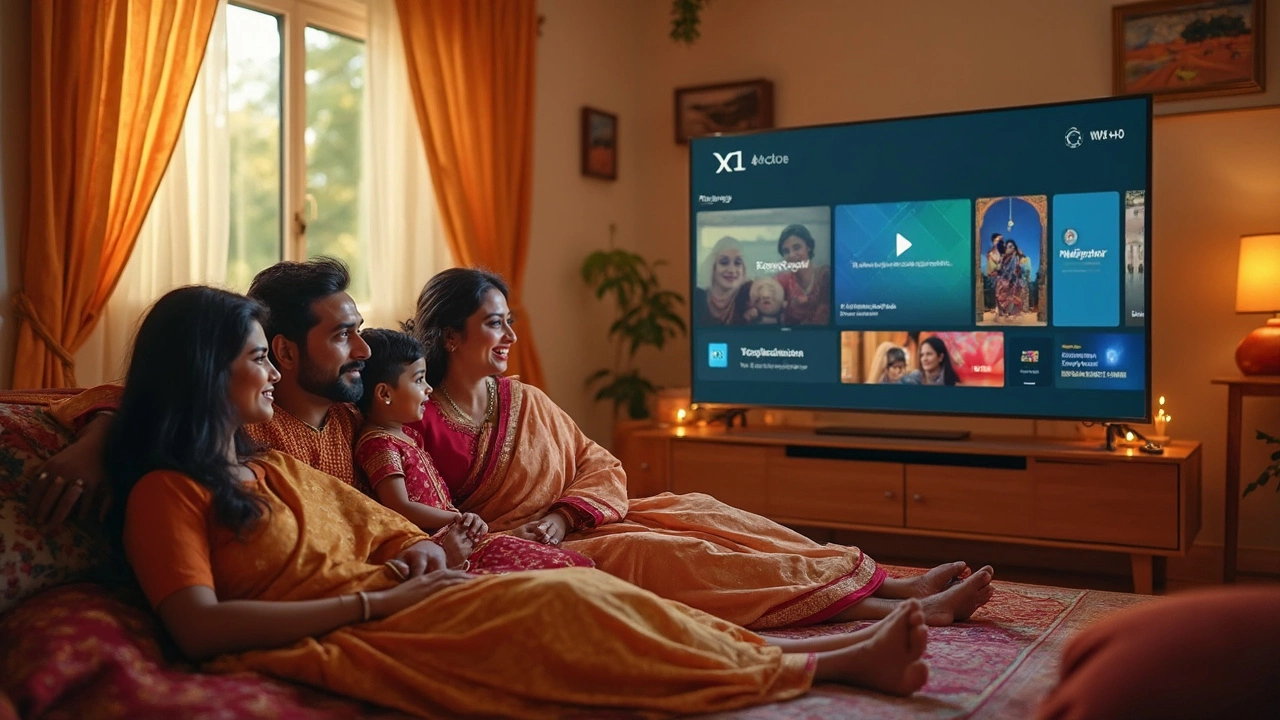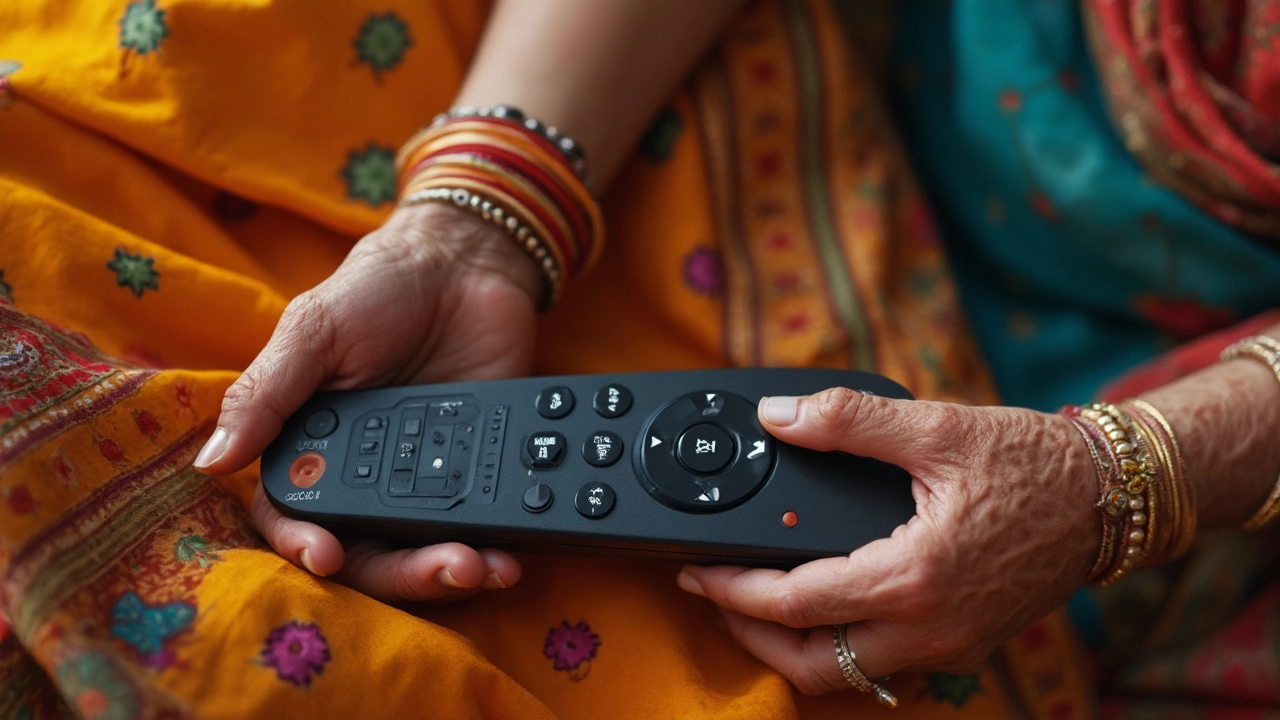
Finding a smart TV that's easy to use might just be as tricky as locating the remote under your sofa cushions. With so many brands out there flaunting fancy features and techy terms, it's easy to get overwhelmed. But at the end of the day, what most of us really want is a TV that doesn't require a degree in rocket science to operate.
Now, just picture this: you're settling down to watch your favorite show after a long day, but instead, you're faced with an interface that seems to require deciphering like an ancient scroll. Not ideal, right? That’s why it's crucial to choose a TV that’s designed for ease. Lucky for us, there are quite a few options catered to those who prefer simplicity.
Smart TVs have come a long way, with many now offering intuitive interfaces that even Mr. Tiddles the cat might accidentally navigate with a paw swipe. But jokes aside, some models truly stand out for their user-friendly experience. Whether it's through a slick menu design, easy-to-understand settings, or a straightforward remote control, the right TV could make your life a whole lot easier.
User Interface Simplicity
Let's talk about why smart TV interfaces play a huge part in making or breaking your viewing experience. You know how smartphones got easier when they ditched the hundreds of buttons for a sleek touchscreen? Well, a user-friendly TV interface does the same thing for your TV adventures.
If you've tried using a TV that feels like navigating a spaceship, you'll appreciate models that prioritize simplicity. Companies like LG and their WebOS, and Samsung with its Tizen system, are known for intuitive designs that don’t overwhelm you with settings or complex menus. These interfaces effectively reduce clutter and present content in a clean, easy-to-navigate layout.
Key Features of an Easy Interface
- Simple Home Screen: Look for TVs with customizable home screens where you can pin your favorite apps and channels. Sony's Android TVs are a good example, letting you arrange icons just the way you like.
- Integrated Search: A search bar that helps you find content across all your apps, not just one, is a lifesaver. TCL’s Roku TVs, for instance, have this feature, making it quick to find what you want.
- User Experience Consistency: TVs like the Vizio SmartCast keep a uniform experience across devices, so if you’re also using the app on your phone, you won't get lost switching between the two.
Having an intuitive interface is more than just good looks; it's about making technology accessible for everyone. This is crucial for families with kids or tech-averse folks who just want to relax without learning a new gadget.
In fact, a survey revealed that 65% of consumers are more likely to purchase a TV with a recognized user-friendly interface. Why struggle with a complicated system when you can have something straightforward and effective?
Voice Control Functions
Voice control on smart TVs is like having a personal assistant in your living room, minus the small talk. It can revolutionize your TV time, making searching for content as easy as chatting with a friend. No more fumbling with remotes or struggling to type in search bars. But of course, not all voice control functions are created equal.
Let's talk about the major players in the smart TV game. First up, we have Samsung's Bixby, which is pretty reliable but might not be as suave as some of its competitors. It offers basic commands like changing channels and adjusting the volume, which can be a lifesaver when your hands are full of snacks. However, if you're looking for a more conversational experience, you might want to look elsewhere.
LG, on the other hand, collaborated with both Amazon Alexa and Google Assistant. This duo gives you a versatile range of voice control functions. You can ask more detailed questions, control smart home devices, or dig deep into Google's vast information vault—all without lifting a finger.
Voice Recognition Accuracy
Accuracy is a big deal. If you've ever tried commanding a smart trap gone rogue, you'll understand the frustration of repeating yourself over and over. Most newer models, especially from top brands, have improved this feature significantly. In particular, Sony’s TVs featuring Google Assistant are known for picking up most accents and delivering on point responses.
One thing to consider before diving headfirst into the world of voice commands is the level of compatibility with other devices. Google and Alexa generally offer more flexibility if you’ve got a whole ecosystem of smart gadgets at home. It's worth checking if the smart TV you’re eyeing can smoothly chat with your other smart stuff.
When It Doesn't Go As Planned
Let’s face it, voice control isn't flawless. Sometimes, you'll find yourself yelling at the screen with nothing happening. It's a good idea to have the remote as a backup or, at least, know where the manual controls are. Common hiccups can usually be fixed by recalibrating the voice settings or ensuring there's no interference disturbing the mic.
Here's a small table summarizing compatibility of different voice assistants with major TV brands:
| Brand | Voice Assistant | Compatibility |
|---|---|---|
| Samsung | Bixby | Limited Compatibility |
| LG | Alexa & Google Assistant | High Compatibility |
| Sony | Google Assistant | Moderate Compatibility |
So there you have it, navigating the world of voice control doesn’t have to be an uphill battle. Just remember to weigh up the pros and cons for each brand before committing. If talking to your TV sounds like your cup of tea, dive into this techy trend and simplify your TV viewing life.

App Accessibility
When it comes to smart TV essentials, app accessibility is a biggie. Whether you're a Netflix enthusiast or a passionate gamer, having your go-to apps at your fingertips makes all the difference.
So, what should you be looking for in terms of app accessibility? First off, check if the TV brand partners with the major content providers. Models from brands like Samsung, LG, and Sony generally have a wide range of apps readily available—thanks to partnerships with popular streaming services.
Most smart TVs run on platforms like Tizen, WebOS, or Android TV. These platforms offer varied app availability. Android TV, for instance, is known for its diverse app ecosystem given its connection to the Google Play Store.
Speed and Ease of Download
When you've settled into your snack fortress for the night, the last thing you want is to wait ages for an app to download. Some TVs offer ultra-fast downloads with apps ready to go in seconds. Always look for models with robust internet compatibility and dual-band Wi-Fi to ensure streaming is smooth as butter.
Navigation
Navigating the app menu should be straightforward. TVs like the Amazon Fire TV set a high standard with their Alexa-powered voice search and organized app categories. Meanwhile, Roku TV offers a neat grid format that's practically foolproof.
Convenience Features
A handy feature to look out for is app updates that happen automatically. This way, your apps stay fresh without any work on your part. Also, consider TVs with customizable home screens or app pins that let you prioritize your favorites.
Available Apps by Platform
| Platform | Apps Available |
|---|---|
| Tizen | 2,500+ |
| WebOS | 1,400+ |
| Android TV | 5,000+ |
Smart TVs have come a long way in enhancing app accessibility to fit various user needs and preferences. Just make sure that the TV you pick aligns with your streaming habits and supports the apps you can't live without.
Remote Control Design
When it comes to smart TVs, a good remote control can make all the difference. Let's be honest, nobody wants to fumble around with a remote that has more buttons than a fighter jet cockpit. The best ones are simple, intuitive, and don't leave you scratching your head.
Take the Amazon Fire TV remote, for example. It's sleek, has minimal buttons, and integrates voice control with Alexa, which is handy when you just can't remember what to press. Speaking into the remote—when it listens properly—can spare you from navigating through endless menus.
Then, we've got the Apple TV Siri Remote, known for its minimalist design and touchpad surface. Some love it, some don't, but you can't deny its simplicity. With fewer buttons, it reduces the confusion found in more button-heavy controllers. It even has a built-in accelerometer for gaming—which might be more fun than functional, but hey, who doesn’t like a bit of extra fun?
Button Layout Matters
A well-organized remote puts frequently used buttons like power, volume, and home right at your fingertips. Remotes from Roku are a great example, known for being user-friendly and having shortcut buttons for popular apps like Netflix and Disney+. This means less scrolling and more watching.
For those who like everything in one place, universal remotes that sync with multiple devices can simplify your life by reducing that cluttered coffee table look. Some even come with programmable buttons so you can set up custom shortcuts. Who wouldn't love that extra bit of convenience?
Size and Ergonomics
While some might laugh, size does matter. A remote that's too small can easily get lost between the sofa cushions—or worse, end up in the dog's mouth (not speaking from experience, of course). On the other hand, a remote that's too bulky is just a hassle. The key is finding that Goldilocks size—just right.
Look for remotes with a curved design for better comfort. After all, you're probably going to end up holding it for a few hours on a binge-watch night. No one wants a hand cramp from changing channels or queuing up the next episode.
| Brand | Ease of Use Rating | Special Features |
|---|---|---|
| Amazon Fire TV | 4.5/5 | Voice Control |
| Apple TV | 4/5 | Minimalist Touchpad |
| Roku | 4.7/5 | App Shortcut Buttons |
So there you go, when picking a smart TV, don't overlook the remote control. Consider the design and functionality as it plays a big role in your viewing experience. Remember, a good remote should make navigating your TV as easy as finding your favorite chair in the living room.